The architecture of every city is shaped over a period of time by the societies that have lived in it . Porbandar too, is no stranger in this regard. The city of Porbandar is located on the Gujarat coast between two other famous cities of the ancient period, i.e., Somnath and Dwarka. The name, Porbandar, has been derived from that of a local goddess, Porai Mata whose temple is much revered by the city folks, several identifying her as their kuldevi. The Sudama charita in the Skand Puran, states that Porbandar was named Porav after the goddess. Porbandar was called Pauravelakul in the 10th century A.D., the name was later changed to Sudamapuri. The city of Porbandar has a rich proto history as well. The discovery of jetties dating back to the 1600-1400 B.C, late Harappan period, points to the existence of trade and maritime activities on the coast of Saurashtra.
Porbandar: Medieval to British times
A newcomer who visits Porbandar would be greeted by the dominant architecture of the coastal city, i.e., white limestone walls. The architectural style of the heritage buildings in Porbandar is mostly Rajput with Western elements. Porbandar had been under the rule of the Jethwa Rajputs since 1671 when Rana Vikmatji laid claim to the city and built a fort at Porbandar. Later Rana Bhanji and Rana Khimoji strengthened their hold over Porbandar, making use of the lack of Mughal attention in that area, as Mughal attention was distracted towards the South and Rajputana. The Rajput influence in Porbandar influenced the city structure in the way other Rajput strongholds were designed. The Jethwa ruling class were fond of Art and music, which is why the heritage structures a tourist would get to see in Porbandar , especially those built by the Jethwa rulers, depict human figures holding musical instruments and the splendid use of the jharokha form of architecture, so commonly found in most Rajput buildings.
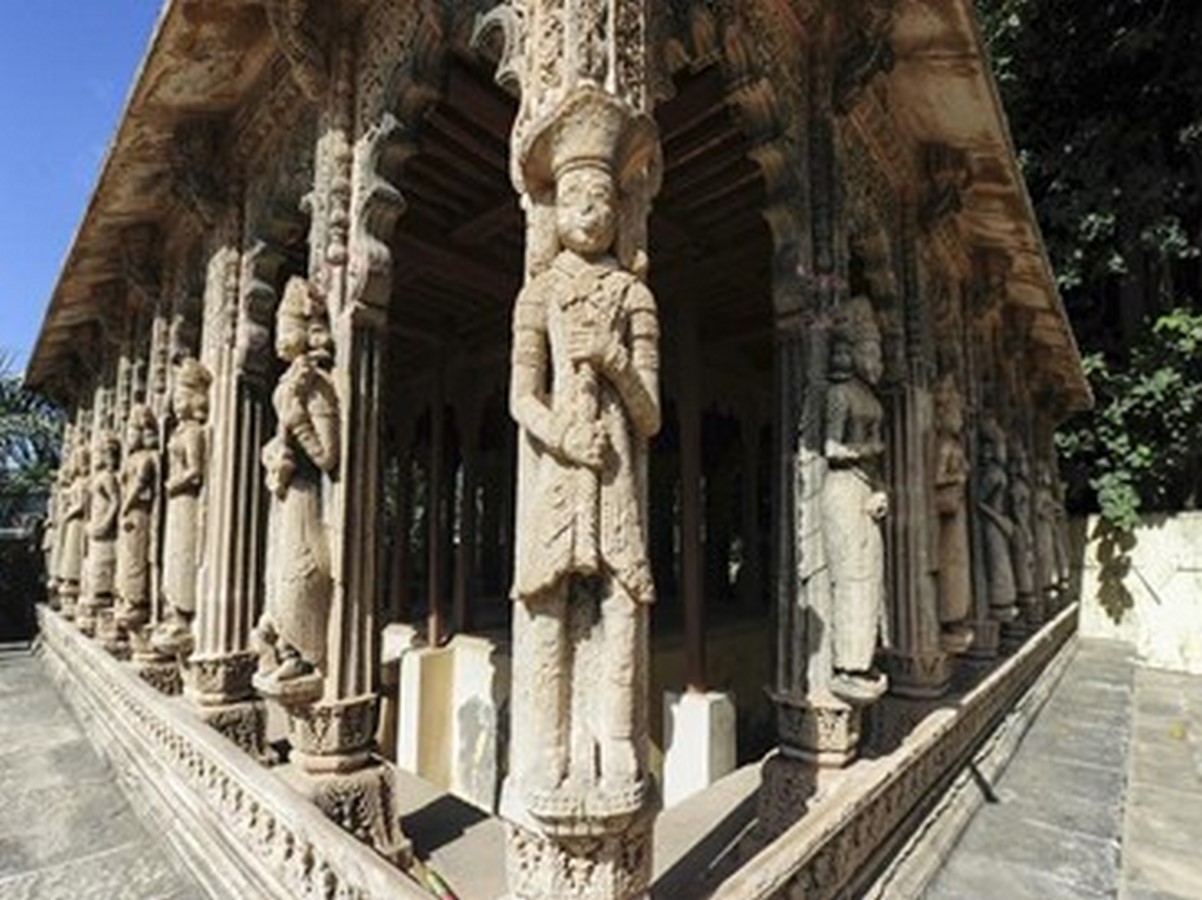
The city structure
The roads have been laid wide, and the buildings have symmetry, white stone is the predominant element in most buildings . The stonework is exquisitely carved in all such buldings. The Rajputs also laid several gardens, fountains and pleasure palaces around the city. In 1809, the amount of tribute which was to be paid by the city of Porbandar to the Peshwa and the British East India Company was settled. Gradually, the city came to be controlled by the British crown. After India’s independence in 1947, Porbandar was merged with kathiawar to form the United States of Kathiawar, which is the current state of Gujarat.
A tourist who might be visiting Porbandar for the first time would be tempted to visit Kirti Mandir,a heritage temple near the birthplace of Mahatma Gandhi. Kirti Mandir is a three-storied structure. It has Hindu, Jain, Buddhist and Muslim styles of architecture. It is a haveli in structure which reflects all the major architectural forms preceding Gandhi’s time and those during his ancestors’ time.
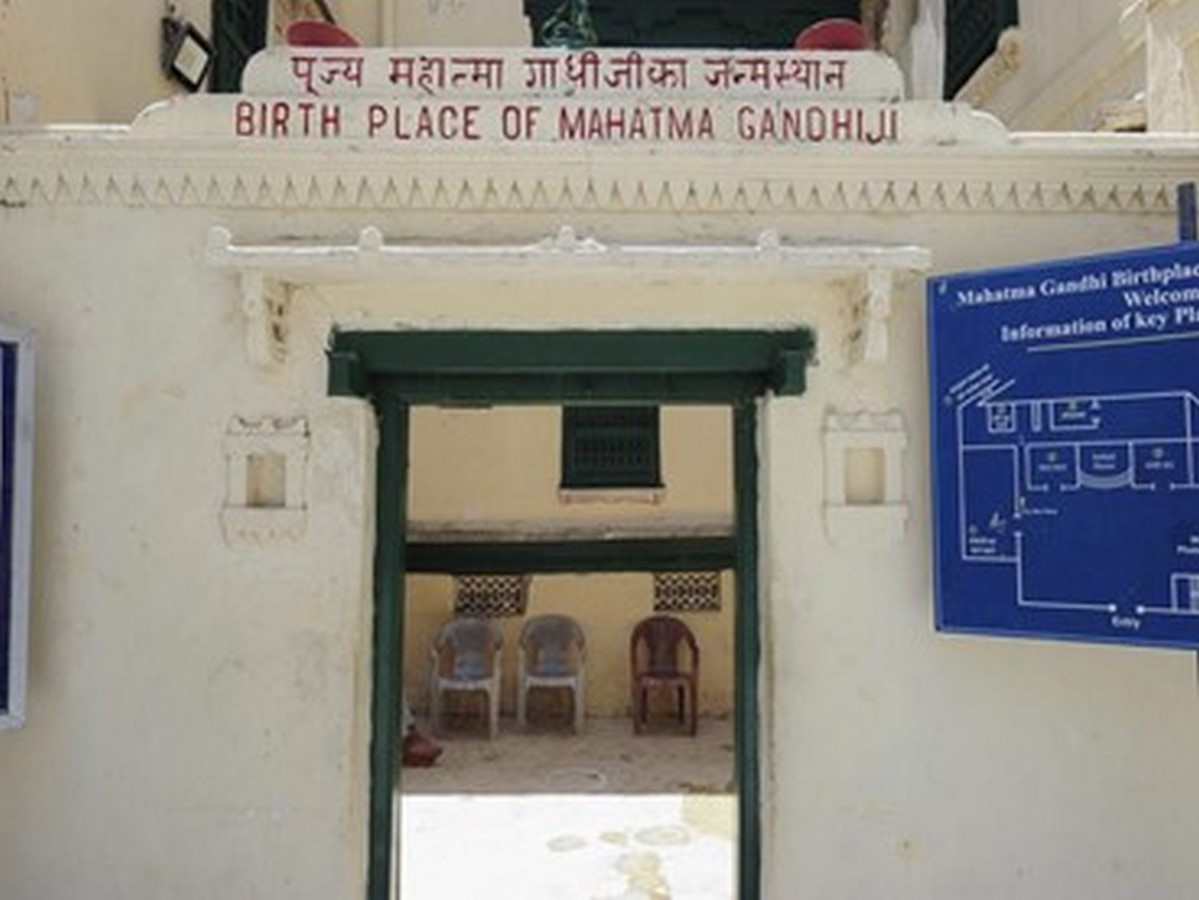
Bileshwar Shiva temple is another historical and religious site a tourist would love to visit while on a trip to Porbandar. It is a temple built in the local architectural style of Gujarat; the temple is as old as 7th century A.D
Darbargadh Fort boasts of housing the highest point in the city. This fort is a three-storied structure and was built by Rana Sartanji. The entrances to the fort are ornamental and designed in the Jharokha style, the main structure of the building contains Jharokha elements that are reminiscent of the period it was built in. Grishmabhavan, commissioned by Maharana Sartanji is another fine example of Rajput architecture with European architectural influences.
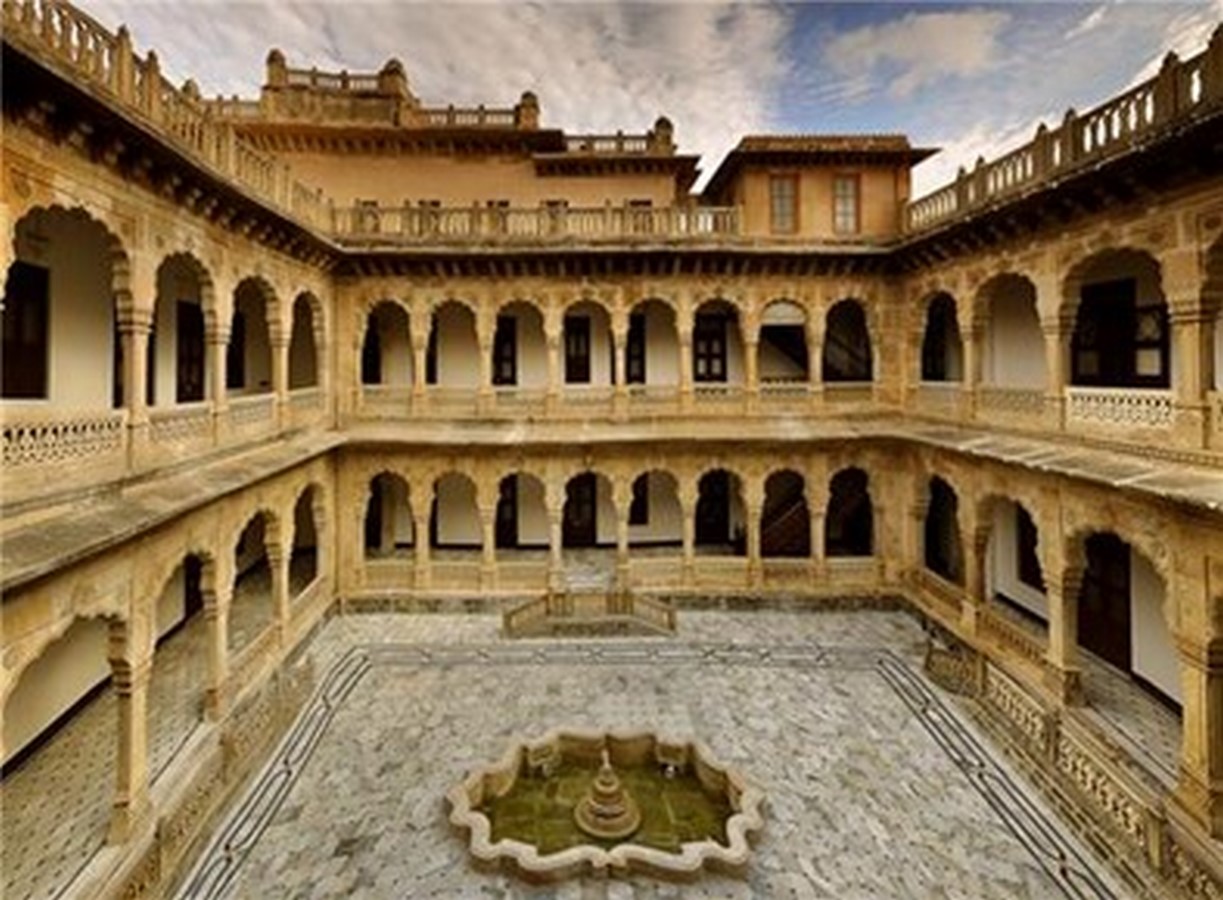
When it comes to European influences in the city architecture of Porbandar, Huzoor Palace is a fine example of this style. The structure exhibits a neo-classical style of architecture, the garden surrounding the palace had been designed in the European fashion, complete with a fountain in it. The Palace has a view of the Arabian Sea.
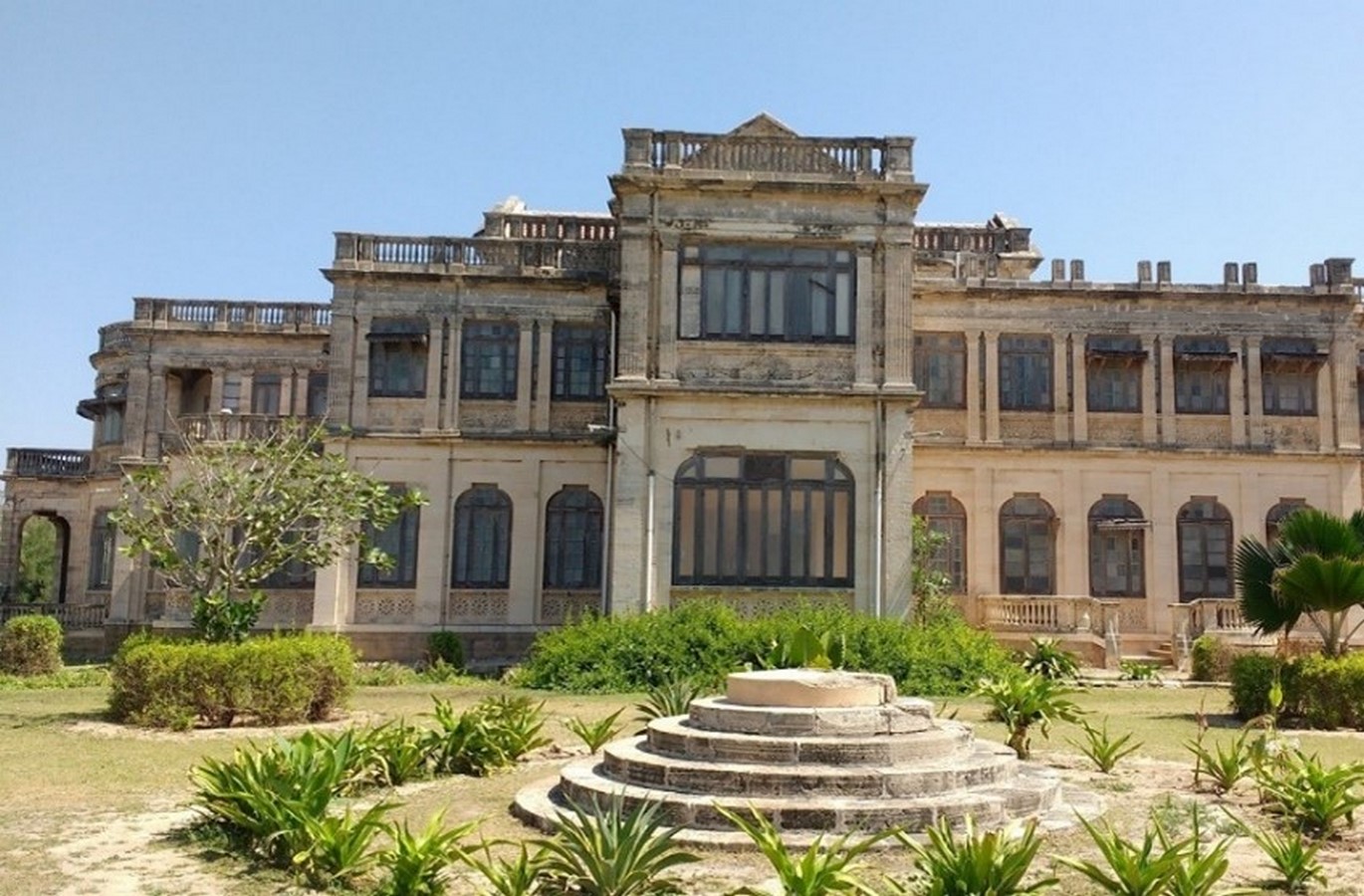
Daria Rajmahal is a historical place that speaks volumes about the influence of the inhabitants who made the city their home, it has architectural features exhibiting Arabic and Renaissance elements along with some gothic and Indian features.
Anut Nivas Khambala is another heritage structure designed in ornate Rajput architectural patterns, built in the typical Rajput style by Maharaja Natwarsingh, in the year 1927. These are a few of the historical places that dot Porbandar, a city that speaks volumes about the ancient and medieval trade relations it had with other civilizations. The city of Porbandar boasts of Rano, its last Rajput ruler, Pano, its local limestone and Bhano, its local longest-working ghee industry. Most houses in Porbandar are old and have limestone as an important component of the built structure. Inhabitants of the city believe that their limestone has a lifespan of more than 500 years. While the Mahatma’s birthplace forms an important part of the town, the city has given equal importance to all heritage structures, each having its own distinct style. The Porbandar railway station is a heritage site, in the sense that it is a broad-gauge station on the westernmost side of the country and had been built in the typical industrial era style.
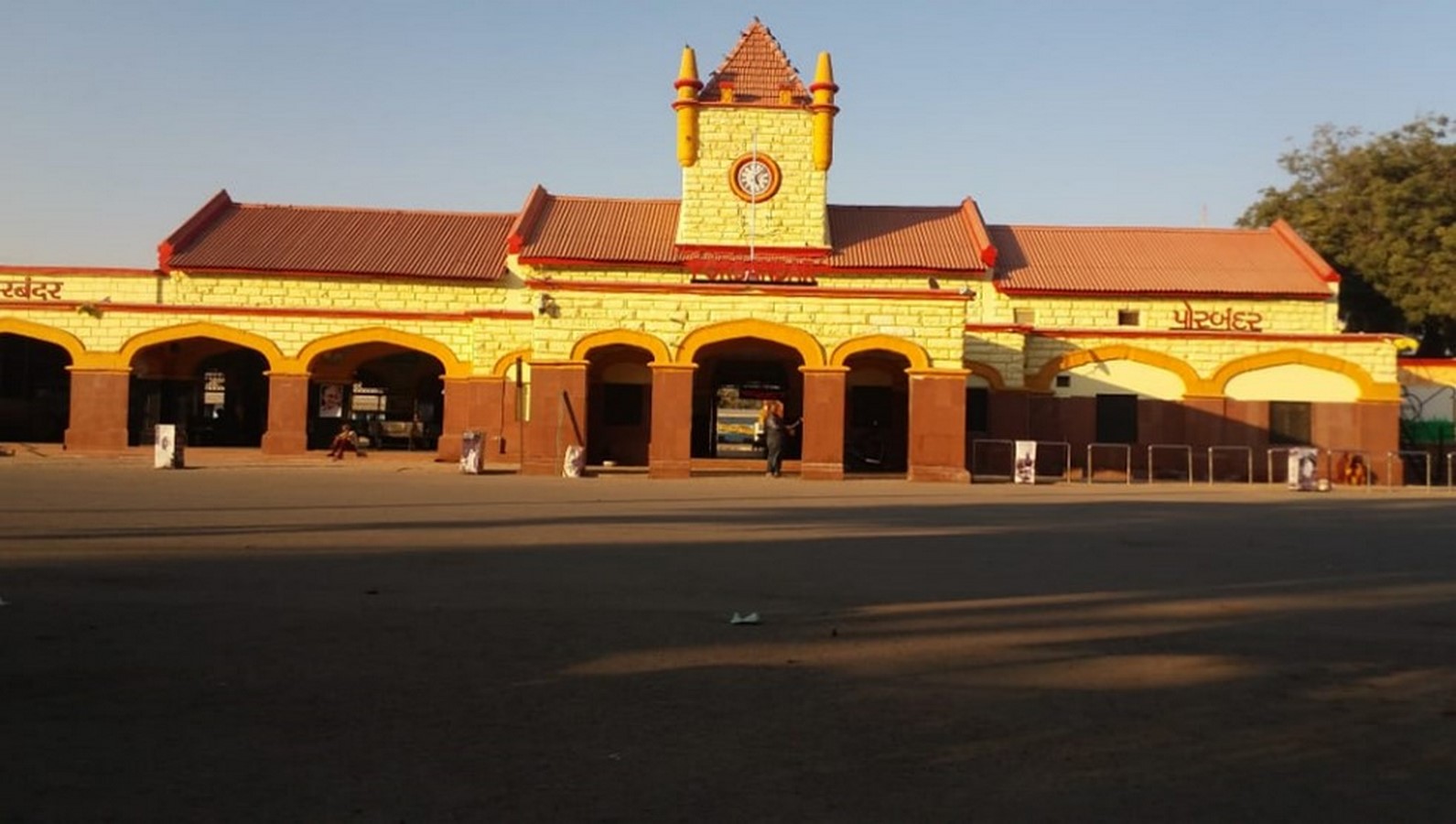
Folk culture and people
Porbandar is globally famous due to the people of the MER and Kharva caste. The Mer caste has a unique dance form which displays the bravery of this specific social group, and the Kharva caste is well-known for its fishing practices. This comes as no surprise as Porbandar has always had an active fishing and maritime culture. The people of the Kharva community are also actively involved in sea harvesting and voyages.
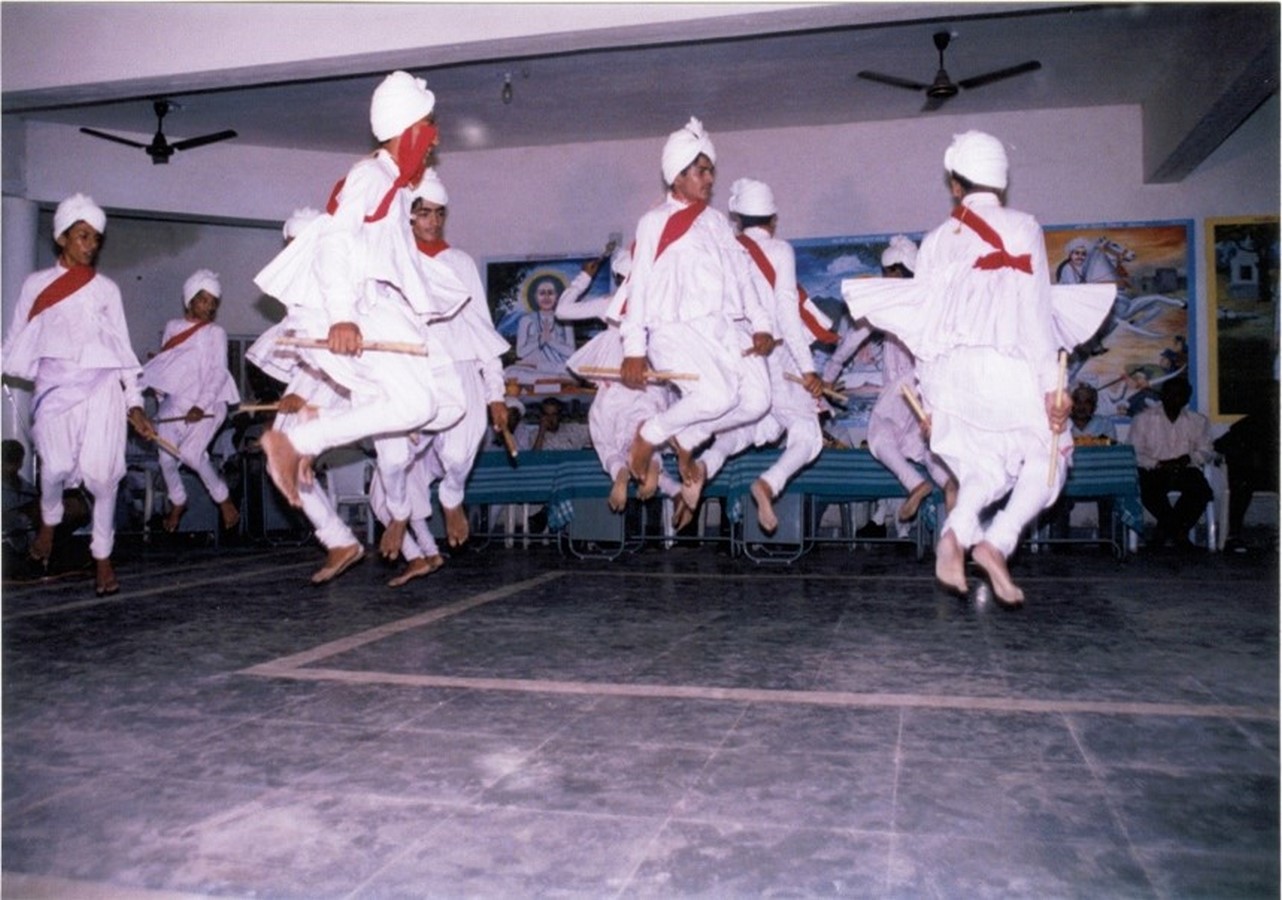

References:
[1] Singhji, V., 1994. The Rajputs of Saurashtra. Popular Prakashan.
Details of the Images used in the article:
1_Sartanji Choro Hall for musical concert. The relief art of the Hall exterior depicts musicians and guards at the four corners_©Vijay Soneji
2_Birthplace of Mahatma Gandhi near Kirti Mandir_©Vijay Soneji
3_Darbargadh fort_https://www.porbandaronline.in/city-guide/darbargadh-fort-in-porbandar
4_Huzoor Palace, Porbandar. The structure shows the use of double columns_https://www.trawell.in/gujarat/porbandar/huzoor-palace
5_Porbandar Railway Station_ www.indianrailways.gov.in
6_Mer Dandiya_https://en.wikipedia.org/wiki/Mer_%28community%29
7_The Kharva source of livelihood on the Porbandar Coast_https://kharvacommunity.org/history.html


















